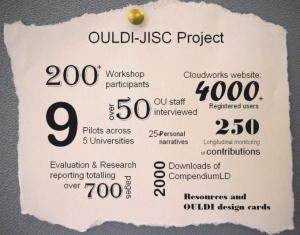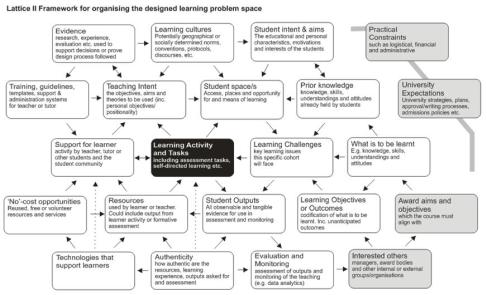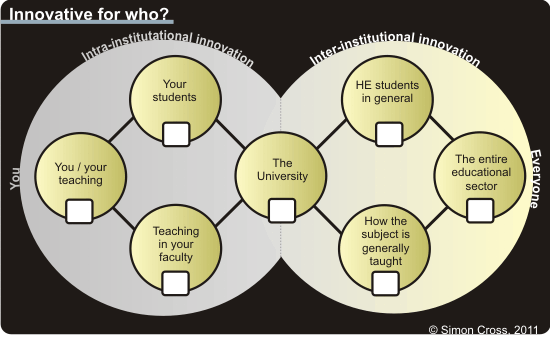I am currently working with Mike Sharples on a university funded project looking at how post-graduate students use e-readers and tablet devices such as Kindles and ipads for their learning. Are these devices having an impact on the efficiency and nature of student study and what they are learning? What implications does this have for our pedagogy?
We begun by casting a look at recent studies that had examined the changing role of e-reader devices. Whilst many of these are from the US and some focus more on the e-book rather than e-reader they reveal a rapidly evolving landscape of device use. The following aims to gather together and share references to some of the papers, reports and articles looked at. Please do add others if you have them in the comments box at the end of the post. The next stage of the project is analyse survey data from over 150 post-graduate students and complete a series of follow-on in-depth interviews.
1. JISC National e-Book Observatory Project
As the JISC project website notes, ‘back in 2007, there was very little known about how e-books were being used by students in universities and colleges across the UK and even worldwide.’ The JISC National observatory project perhaps marked a watershed in the UK; gathering a huge amount of data by working with over 120 universities and collecting survey responses from over 52,000 students and academics.
Hamid R. Jamali, David Nicholas, Ian Rowlands, (2009) ‘Scholarly e-books: the views of 16,000 academics: Results from the JISC National E-Book Observatory’, Aslib Proceedings, Vol. 61 Iss: 1, pp.33 – 47. The aim of this paper by Hamid et al. was to review the open-text responses given in the survey conducted as part of the UK National E-books Observatory and to use the 16,000 responses given to understand respondent perspectives on the advantages of e-books and thoughts about them and the context in which they are used. The paper looks at the responses to two open-text questions asked in the survey. Link
Rowlands, I., Nicholas, D., Jamali, H. and Huntington, P. (2007) What do faculty and students really think of e-books? (Report), CIBER University College London.
Nicholas, D et al. (2010) E-textbook use, information seeking behaviour and its impact: Case study business and management, Journal of Information Science, 36, 263-280.
2. Gathering Momentum 2007-2009
During 2008 and 2009 a number of investigations into the use of e-books were undertaken; some into student use of e-books and – to a more limited extent – e-readers, and others into the use by and response from faculty and lecturing staff. For example:
Noorhidawati, A. and Gibb, F. (2008) How students use e-books – reading or referring? Malaysian Journal of Library and Information Science, 13 (2), 1-14. This paper by Noorhidawati and Gibb presents the results of a web survey of students undertaken in 2005/06 at the University of Strathclyde. There were 1372 responses (around 10% of total university). The study found ‘that there were three different types of e-book use in an academic setting: (a) fact finding; (b) finding relevant content; and (c) extended reading.
Lam, P., Lam, S., Lam, J. and McNaught, C. (2009). Usability and usefulness of eBooks on PPCs: How students’ opinion vary over time, Australasian J. of Ed. Tech, 25(1), 30- 44. Like Biermans’, this is a relatively small-scale study and involved 12 students using PPCs (Pocket PCs). In their introduction, Lam et al. take the following position: mobile learning can extend learning spaces; ownership of mobile devices in Hong Kong is high; reading digital materials such as newspapers is valued but ‘the value of reading academic e-Materials in a mobile formal is less known;’ and the ‘phenomenon’ of e-books is ‘quite different’ from that of e-Journal use. They claim that rising cost of print books and the ability to link multimedia resources are seen as two key drivers to e-book up-take by libraries.
Bierman, J., Ortega, L. & Rupp-Serrano, K. (2010) E-Book Usage in Pure and Applied Sciences, Science and Technology Libraries, 29:1-2, 69-91.
Camacho, L. & Spackman, A. (2010) Transitioning to E-books: Usage and Attitudes Among Business Faculty, J. of Business & Finance Librarianship, 16, 1, 33-45.
Foster, G. and Remy, E. (2009) E-Books for Academe: A Study from GettysburgCollege,’ Educause Research Bulletin, 22.
Rickman, J., Von Holzen, R., Klute, P. & Tobin, T. (2009) A Campus-wide E-Textbook Initiative, Educause Quarterly, 32, 2 Link
3. Kindle e-Reader US pilots 2009-2010
In 2009, Amazon commissioned a number of pilots in US universities that sought to understand how the Kindle e-reader could be used in a Higher Education context. The focus of these pilots varied yet teaching and learning was usually considered to some degree.
Cliatt, C. (2010) Kindle pilot results highlight possibilities for paper reduction, News at Princeton, 22 February 2010. The intention of this pilot was to ascertain if using Kindle e-readers could help the institution to save paper whilst not adversely affecting the learning experience. The study begun in late 2009 and involved 50 students across 3 courses. Participating students and faculty members in the pilot courses received a free device that they could keep.
Darden School of Business (2010) Darden Shares Results of Kindle Experiment, University of Virginia News and Media. 5 November 2010. The purpose of this Kindle pilot, which like the others begun in late 2009, was to ‘explore how the Kindle DX can enhance teaching and learning, promote effective applications of technology in higher education, improve environmental sustainability and lead to potential cost savings to schools and students. In addition to saving students from lugging around heavy backpacks, the technology could substantially reduce the use of paper.’
Marmarelli, T. and Ringle, M. (2010) The Reed College Kindle Study. 26 February 2010.
4. iPads, e-Books and e-Readers 2010
The Kindle pilots appear to have been closely followed by two other pilots in the US, both of which appear to be widely cited. The first was undertaken by Oklahoma State University and involved use of the Apple iPad and the second by the University of California looking at e-book usage (sponsored by the book publisher Springer). Alongside these can be found many smaller studies in to e-readers and e-textbooks
iPad Study Released by Oklahoma State University, Executive Summary, 3 May 2011. This study was undertaken during the autumn of 2010. Five sections of two courses across two colleges and two campuses participated in the Apple iPad Pilot Program.
Li, C., Poe, F., Potter, M, Quigley, B. and Wilson, J. (2011) UC Libraries Academic e-Book Usage Survey: Springer e-Book Pilot Project, University of California Libraries. The primary objectives of this study were to examine: respondents’ general preference for print books as compared to e-books; how respondents interact with e-books and barriers to e-book adoption and use; how users of Springer e-books discover their availability; and satisfaction level with Springer content and features, including the ‘MyCopy’ service.
Weisberg, M. (2011) Student Attitudes and Behaviors Towards Digital Textbooks, Pub Res Q, 27, 188-196. This paper takes the position that the textbook industry, like others, is being disrupted and transformed by digital technologies in the form of e-Readers and e-books which may impact economics and business models. The paper reports findings of a two year study at SawyerBusinessSchool, SuffolkUniversity, Boston. Students from the ‘cap-stone’ undergraduate course were divided in to groups and given either a Kindle, Sony e-Reader Touch, iPad, entourage eDGe or CourseSmart. All five groups also got apaper textbook and there was a sixth group who were only give a paper textbook.
Foasberg, N. (2011) Adoption of E-Book Readers among College Students: A Survey, Information Technology and Libraries, September 2011, 108-128. The aim of this study was to learn whether e-book readers have become widely popular among college students at one large, urban, four-year public college. A survey asked students whether they owned e-book readers and if so, how often they used them and for what purposes. This information, Foasberg argues, is important to help libraries to understand student use of eBooks and whether students use them ‘of their own volition.’
Pattuelli, M. & Rabina, D. (2010) Forms, effects, function: LIS students’ attitudes towards portable e-book readers, Aslib Proceedings, 62 (3), 228-244.
Reynolds, R. (2011) Trends Influencing he Growth of Digital Textbooks in US Higher Education, Pub. Res. Q., 27, 178-187.
Robinson, S. (2011) Student use of a Free Online Textbook, Academy of Educational Leadership Journal, 15 (3)
5. E-Reader Use and National Studies 2011
This year saw the publication of the ECAR 2011 survey results, 2011 Horizon Report and the Mobile Education Landscape Report. Of the three, E-readers appear to feature most in the ECAR survey. In the UK, the Open University took part in the HEA Post-graduate Taught Experience Student Survey.
Dahlstrom, E., de Boor, T., Grunwald, P. & Vockley, M. (2011) ECAR: National Study of Undergraduate Students and Information Technology, 2011 (Research Report). Boulder, CO: Educause Center for Applied Research. The ECAR Student Technology Study looked at student use and perceptions of technology. In the preface it is acknowledged that ‘while no single study can mirror results you might find on your campus, the 2011 study used a stratified random sample of students so you can extrapolate these results to higher education.’ The data presented in this study represents the responses of around 3,000 students drawn from the much larger population of US HE students.
Johnson, L., Smith, R., Willis, H., Levine, A., and Haywood, K., (2011). The 2011 Horizon Report. Austin, Texas: The New Media Consortium.
In addition
There have been plenty of articles and opinion pieces about the use and role of e-readers. Here are a few:
Murray, O. & Olcese, N. (2011) Teaching and Learning with iPads, Ready or Not? TechTrends, 55, 6, 42-48.
Nelson, M. (2008) E-Books in Higher Education: Nearing the End of an Era of Hype? Educause Review, 43 (2)
Nelson, M. (2010) E-books in Higher Education: Are we there yet? ECAR Research Bulletin, 2.
Slater, R. (2010) Why Aren’t E-books Gaining more Ground in Academic Libraries? EBook Use and Perceptions: A Review of Published Literate and Research, Journal of Web Librarianship, 4 (4) 305-331.
Young, J. (2009) This Could be the Year of E-Textbooks, if Students Accept Them: Many titles are available, but student are wary, The Chronicle of Higher Education, 7 September 2009.



